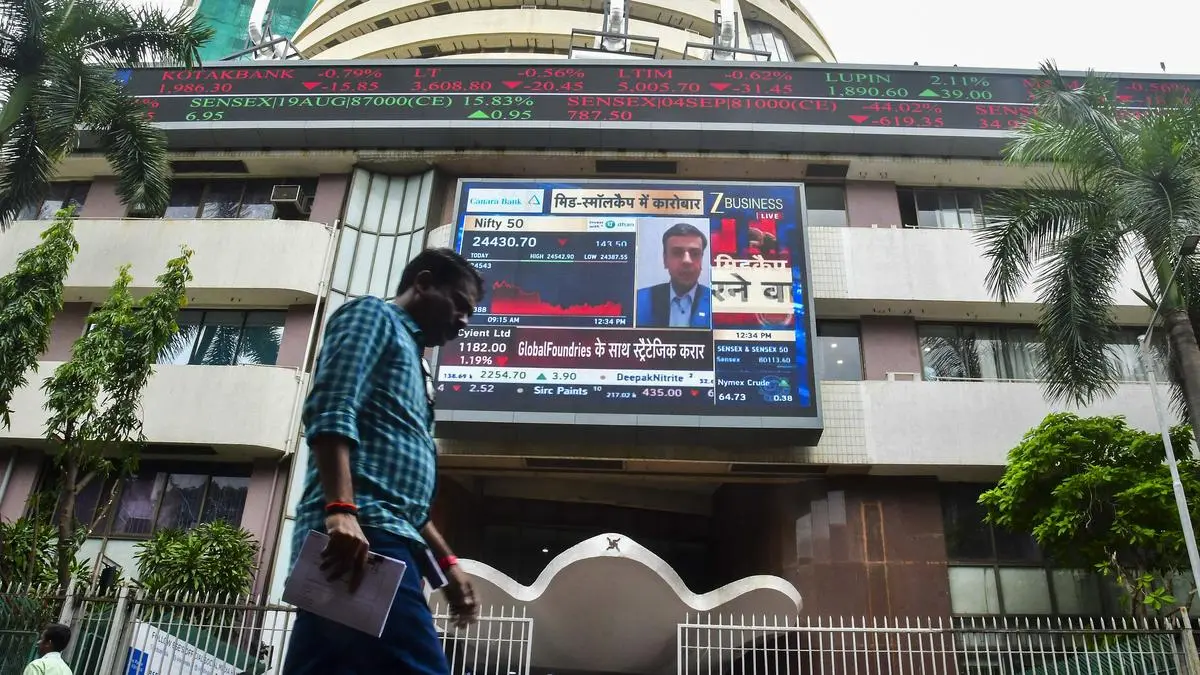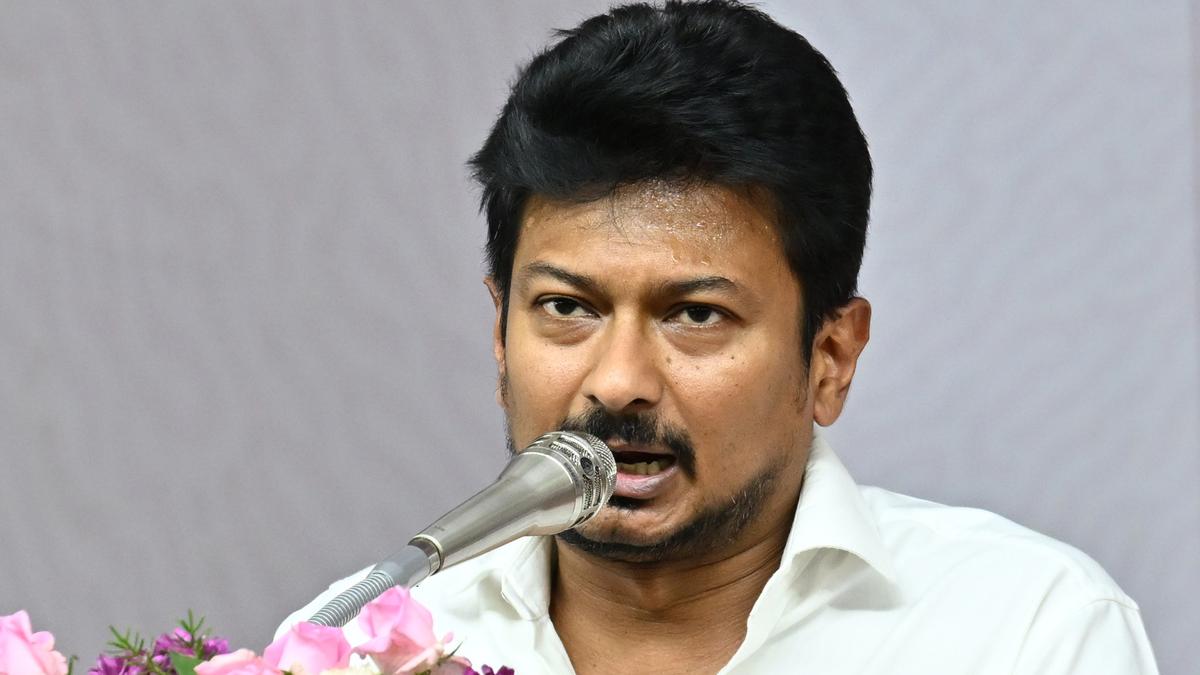
Sensex falls 493 points as Trump tariff threat deepens market selloff
Markets extended their morning decline into the afternoon session on Friday, with the Sensex dropping 492.69 points to 80,130.57 and the Nifty falling 146.55 points to 24,449.60 as of 1.16 PM. The benchmark indices lost 0.61 per cent and 0.60 per cent respectively, continuing the negative momentum triggered by fresh U.S. tariff threats and persistent foreign institutional investor outflows.
President Trump’s decision to double tariffs on Indian goods to 50 per cent, with an additional 25 per cent levy effective August 27, has intensified selling pressure across sectors. Foreign institutional investors have accelerated their selling spree, offloading nearly ₹5,000 crore on Thursday alone and over ₹15,900 crore in August so far, though domestic institutional investor buying has provided partial support.
Market breadth remained weak with 2,049 stocks declining against 1,725 advances on the BSE. The broader market underperformed with the Nifty Midcap 100 falling 0.99 per cent to 56,374.40, while sectoral indices showed mixed performance. The Nifty Bank index declined 0.75 per cent to 55,107.15, and the Nifty Financial Services index dropped 0.69 per cent to 26,222.55.
Among individual stocks, NTPC emerged as the top Nifty gainer, rising 2.11 per cent to ₹336.70, followed by Titan Company which gained 1.46 per cent to ₹3,465.40. Trent added 0.97 per cent to ₹5,355.00, while HDFC Life Insurance rose 0.85 per cent to ₹762.10 and Tata Consumer Products climbed 0.66 per cent to ₹1,059.70.
On the downside, Adani Enterprises led the losers with a 3.24 per cent decline to ₹2,177.00, followed by Bharti Airtel which fell 2.71 per cent to ₹1,870.50. JSW Steel dropped 2.01 per cent to ₹1,043.40, Grasim Industries declined 1.94 per cent to ₹2,690.40, and IndusInd Bank fell 1.77 per cent to ₹793.10.
The Reserve Bank of India’s decision to maintain the repo rate at 5.5 per cent with a neutral stance has added to market caution, with traders interpreting the stance as hawkish given current economic conditions. Technical analysts continue to monitor Nifty support at 24,344 levels while resistance is pegged around 24,650-24,850.
Commodity markets reflected global uncertainty with gold and silver retreating from recent highs, though trade tensions provided underlying support. Crude oil prices fell below $64 per barrel on expectations of potential diplomatic engagement between the Trump administration and Russia.
Market participants remain concerned about the potential impact of prolonged tariff disputes on India’s economic growth trajectory, with analysts warning that sustained trade tensions could significantly affect GDP expansion in the coming quarters.
Published on August 8, 2025



